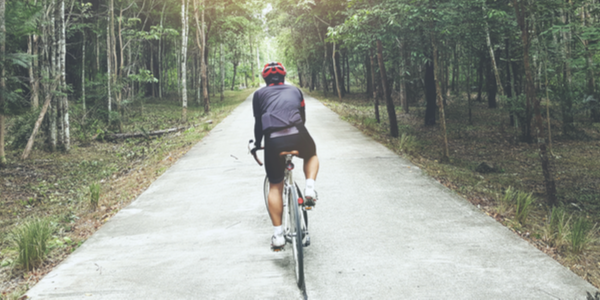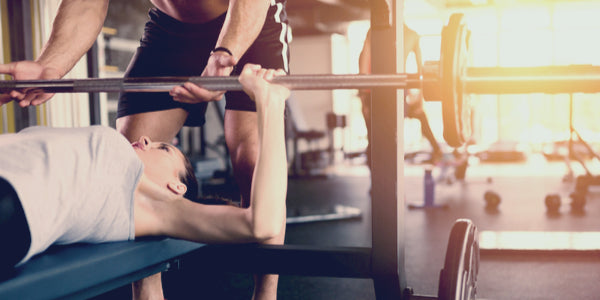
For those who believe running is the only form of exercise synonymous with cardio, think again! Whereas running taxes muscles and joints and increases the risk of injury to some extent, low-impact cardio aims to mitigate this stress.
But do not be fooled... Low impact aerobics can still be sweaty exercise that offers numerous health benefits.
Discover how to incorporate cardio without running to boost fitness and prevent injuries common in high-impact workouts.
What Is Low Impact Exercise?
Low-impact exercise can be defined as physical activity that causes little biomechanical stress. It does not involve powerful force movements like repeated pounding or jumping as is the case with exercises like running, box jumps, or explosive moves.
On the other hand, high-impact exercise can cause great biomechanical stress and is frequently synonymous with running, plyometrics, and other movements that requires jumping, sprinting, or pounding. In this type of physical movement, biomechanical stress is caused by a repeated force that essentially pounds bones, muscles, tendons, and ligaments. Thus, injury is much more common and proper rest and recovery are even more imperative.
Still today, many people believe exercise needs to be a rigorous, nearly nauseating sweat session to incur any health benefits - but this could not be further from the truth. In fact, low-impact exercise can still lead to the same physiological stress, aka, it bolsters cardio or aerobic fitness by improving heart and lung capacity. However, it achieves this enhancement while preserving skeletal integrity.
Is all high-impact exercise bad then? No, not necessarily.
But for those with prior bone or muscle injuries and barriers, those who are intimidated by high-intensity movement or those who find it too challenging can reap the physical and mental benefits of exercise from low-impact workouts. Beyond injury risk, engaging in high-impact exercise too often is also associated with a suppressed immune system, raised cortisol production, increased irritability, and other symptoms of overtraining.
For these reasons, it can be smart to alternate low and high-impact exercise within a week. Regardless of the type of exercise, health experts recommended achieving 30 to 60 minutes of physical activity most days of the week. Whereas high-impact workouts fare well around the 20 to 30-minute mark, low-impact exercise can be enjoyed for longer amounts of time.
Low Impact Exercise Equipment
Most exercise equipment is inherently low impact by nature because it is designed to remove some of the natural stress of physical movement. For example, treadmills boast a springier surface compared to the road, or worse, the sidewalk, while ellipticals completely remove the repeated pounding nature of running.
Moreover, strength training can be made low impact by using less weight and taking longer breaks in between sets. Also utilize resistance bands, yoga balls, and/or solely exercise equipment rather than free weights, which require more stabilization, mind-muscle connection, and a larger range of motion.
Some of the most effective low impact cardio exercise equipment includes:
• Cushioned treadmills (like the NordicTrack X11i)
• Elliptical machines
• Stationary cycling bikes
• Recumbent exercise bikes
• Desk ellipticals and mini exercise bikes
• Rowing machines
• Multipurpose training/exercise machines (like the Bowflex M8 Max)
• Jacob’s Ladder
• Stair steppers (not stair climbers)
• Hula Hoops
Low Impact Workouts
As mentioned, while some physical activity is naturally low impact, nearly any type of body workout can be made low impact with certain modifications. To make high-impact exercise less so, think about reducing pounding and jumping motions.
For example, reducing running to walking lessens the pounding, and thus, the degree of bone impact. In a circuit workout (which can be considered cardio depending on the movements), switching from jumping exercises like squat or alternating lunge jumps to the bodyweight version decreases impact similarly.
To make the most of low-impact workouts, incorporate intervals that transiently increase heart rate and work output. Examples of low-impact cardio workouts include walking and biking workouts, recreational sports, and circuit training.
Walking Workout
The health benefits of walking are undoubted, and many can enjoy a walk as a low-impact workout.
Warm up at a leisure pace for ten or more minutes and leave five to ten minutes for a cool-down walk at the end. With the remaining time, alternate between walking briskly for two to five-minute intervals with the same amount of rest. Repeat for as many intervals as possible.
If on a treadmill, increasing incline during intervals achieves the same results as quickening speed.
Biking Workout
On most stationary bikes, there are two ways to increase work output without adding impact. Increasing speed/cadence and/or resistance makes biking more difficult.
As a workout, begin cycling at a moderate to a brisk pace for five to ten minutes. Follow with 20 to 60-second intervals of increased cadence and/or resistance and equal parts rest.
Repeat this five to ten times with additional cool down for a complete workout.
Recreational Sports & Activities
Various recreational sports like swimming, dancing, softball, kickball, pilates, and yoga are simply low impact by nature. This does not mean they do not cater to physiological benefits though!
Circuit Style Workout
Doing bodyweight movements quickly, in succession without much rest equates to a cardio workout. EMOM (every minute on the minute) and AMRAP (as many reps as possible) workouts are typical cardio circuit workouts.
For EMOM workouts, choose five to six bodyweight exercises and repeat them three to six times for a total of 20-40 minute workouts. For an AMRAP workout, set a timer for 15-30 minutes, choose five to ten exercises, and complete as many reps in the allotted amount of time.
Some of the most effective bodyweight cardio exercises include mountain climbers, jumping jacks, squat variations, rows, V-ups, bicycles, and front, reverse, and side lunges.
Recapping Low-Impact Exercise
Low impact exercise provides the same physiological cardiorespiratory benefits as high impact exercise but reduces the burden of biomechanical stress. This is great for people prone to injuries, those with prior injuries, and those with biomechanical hindrances.
Nearly all forms of activity can be made low impact with modifications, but some of the most popular include ellipticals, walking, recumbent bikes, pilates, and yoga. To get the most out of low-impact exercise, incorporate intervals that temporarily raise the heart rate.
References:
Davis N. 5 Low-Impact Cardio Exercises That Burn the Most Fat. Healthline. Published November 2, 2018. www.healthline.com/health/fitness-exercise/low-impact-exercises.
Times H. These 4 Low-Impact Cardio Workouts Are Great for Runners. Runner's World. Published February 23, 2021. www.runnersworld.com/training/a25397623/low-impact-cardio/.







